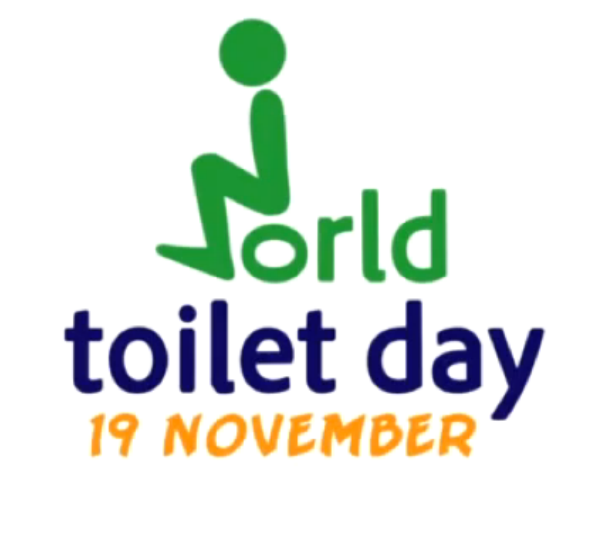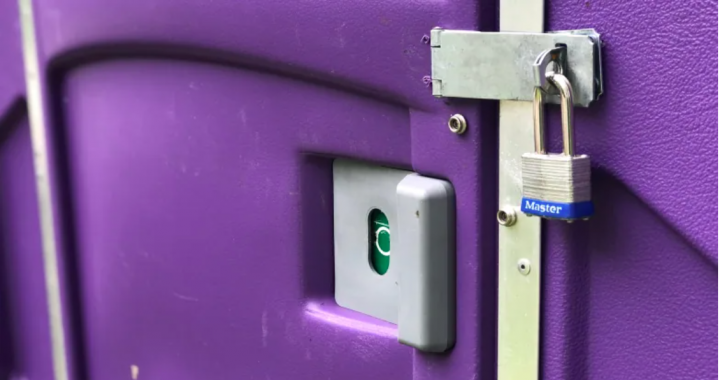Lezlie Lowe says North Americans have ‘almost neurotic responses to public bathrooms’
As It Happens, CBC Radio, July 10, 2020
The COVID-19 pandemic is opening people’s eyes to the lack of available washrooms in Canada, says the woman who literally wrote the book on public toilets.
“The question now isn’t simply when and how our public bathrooms will reopen. It’s whether the pandemic will be the tipping point that teaches people the truth about public bathrooms,” Lezlie Lowe, a Halifax journalist and author of No Place To Go: How Public Toilets Fail Our Private Needs, wrote this week in The Walrus.
“[F]ar from being unhygienic, unsafe or simply unimportant, with the correct distancing and cleaning measures, these facilities are a crucial part of any effective plan for preventing disease and easing inequity.”
Here is part of Lowe’s conversation with As It Happens guest host Nil Köksal.
If you left the building that you’re in right now in Halifax, how far would you have to walk to find a public bathroom?
Oh, my gracious. I don’t even actually know how far I would have to walk. Quite a distance, I think.
How much more has this pandemic revealed about the issue of public bathrooms in this country?
What we’ve seen during the pandemic all across the country is that, in Canada, we really have a culture of relying on publicly accessible toilets, which is to say toilets that are in private businesses … rather than public bathrooms, which are bathrooms that would be on streets, paid for by taxes and just considered part of the kind of basket of goods that we know we need to use our cities safely.
Stop signs and sidewalks and benches and trash cans — we know we need all those things. We don’t really question paying for those things out of our municipal tax dollars. But bathrooms have really been left out of that in Canada and in other other parts of North America.
What we’ve seen with COVID is there’s been this really big shutdown. And so not only have the few public bathrooms that are in many cities closed, but we’ve seen all these publicly accessible bathrooms closed. And all of a sudden people are like, “Wait a minute, wait a minute,” who really actually had pretty good access before. And now, they’re feeling what it’s like to have diminished access.
You’ve also written that bathrooms are about mobility. Elaborate on that.
When you look at any sort of municipal plan for any cities — and I did a lot of this research for my book — cities talk about walkability, they talk about livability, they talk about being pedestrian friendly and cyclist friendly, and a lot of talk about people aging in place.
None of those things are possible without a reasonable, accessible grid of public bathrooms because there is absolutely no way around the fact that bathrooms are needed by everybody every day of their lives.
Everybody uses the bathroom. And what we see in cities is you can go farther and you can stay out longer when you have access to that grid of public bathrooms.
We’re taught that bathrooms are places where you do private things, which they are. They’re also kind of a joke.
– Lezlie Lowe, journalist and author
What’s the holdup, then, here, do you think? You know, in Paris, I’ve seen automated toilets. In Istanbul, you can go to a mosque or WCs [water closets]. You know, you pay a few cents. Right across Europe, there’s all of those examples. What’s the holdup here?
We have a really different attitude toward bathrooms in, I would say, North America, and Canada particularly, than other places in the world.
The way I always describe it is when we’re kids, we’re taught that bathrooms are places where you do private things, which they are. They’re also kind of a joke. You know, I wrote a book about public bathroom access. There’s only two responses. People are either like, “Ew, that’s gross.” Or they’re kind of like, “Ha ha ha!”
So we have these really kind of almost neurotic responses to public bathrooms, and we’re taught that as kids. And what happens is when we become adults, we sort of lack the capacity for talking about, you know, the basic need to go to the bathroom, in a serious way. And I think that is actually borne out in the policy decisions of cities.
And people experiencing homelessness in cities, including Toronto, have talked about this in recent weeks as well. Access for them is an issue.
Yeah. And I mean, I’m sure that is exacerbated now.
We talk about COVID, but we also have to think about the other health risks that are actually around when we look at public bathrooms. And there’s ongoing hepatitis A outbreaks due to public defecation. I mean, there’s very serious health concerns that we need to take into account when we think about what the value of having public bathrooms is.
And on the issue of COVID, I suspect some municipal leaders might say, you know, we just can’t keep up. You have to clean these facilities. They wouldn’t be safe, especially during a pandemic. But in your most recent article about this in The Walrus, you say public bathrooms aren’t really riskier than any other high-touch public spaces.
We do automatically think of public bathrooms as these sort of paragons of filth. And, yeah, they can get really dirty. But so can other spaces.
Public bathrooms are not a high risk for COVID for a couple reasons. One is that COVID is a respiratory illness. And so what we know is that we need to stay out of small spaces with shared air with strangers. That’s the same as an elevator. Nobody is talking about closing every elevator in every high-rise because they’re too risky. We’re just putting mitigation factors in place. So, you know, we say only two people in an elevator.
The other issue is high-touch surfaces. Yes, there are high-touch surfaces in bathrooms, but there are also high-touch surfaces entering, you know, malls and public libraries and restaurants and elevators, for that matter. And so, yeah, there needs to be enhanced cleaning. That’s no different than any other space right now as we’re coping with the pandemic.
The one thing that I would say sets public bathrooms apart when we’re talking about COVID is, ironically, the fact that we practise hand hygiene in public bathrooms. Public bathrooms are the places we go to help get the virus off of our hands. So that sort of puts, I would say, a greater onus on cities to do those reasonable control of access and sanitizing solutions but also keeping bathrooms open, because people need to wash their hands more than ever when it comes to this virus.
Any sense of the costs for cities to put these public washrooms in?
Bathrooms are not cheap. They are, if you’re looking at the on-street automated toilets that you mentioned earlier, those can cost, you know, a quarter of a million dollars to install.
I think we have to ask ourselves, who do we want to be? What do we want as a society? Because when we talk about livability, we talk about walkability. When we talk about people aging in place, if we say we want those things, then we actually have to put in place the supports that support those things.
So I think that, yes, they are costly, but they are also necessary to human dignity and to the full and reasonable use of our cities.
Do you think the pandemic, as you wrote, will be a tipping point?
I can say that, you know, as the person who wrote the book on public toilets, I have never talked about public toilets so much as I have in the last four months. And I think that’s fantastic.
Written by Sheena Goodyear. Interview produced by Menaka Raman-Wilms. Edited for length and clarity.



